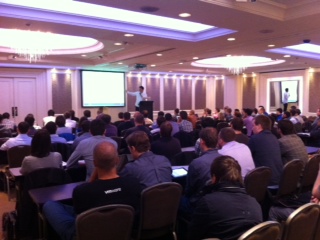This Week in Spring - April 24th, 2012


Welcome back to another installment of This Week in Spring! As I compile this, I'm eagerly waiting for Costin Leau to begin his talk on NOSQL with Spring here in sunny, and beautiful Kiev, Ukraine, the first stop in the European leg of the Cloud Foundry Open Tour. The turnout for this event's been staggering! If you're reading this, then you've already missed out on the chance to attend the Kiev event, but be sure to register for the upcoming Moscow and London events.
- In this SpringOne 2GX 2011 session, Mark Fisher and Thomas Risberg transform a monolithic enterprise application by changing its relational DB with a NoSQL one, introducing modularity, adding polyglot support and incorporating message queuing and event driven request processing using common enterprise integration patterns.
- Did you guys notice that the final edition of the excellent Spring Roo in Action has just been published?
This book is, as Ben Alex (Spring Roo project founder) put it, "an insightful and comprehensive treatment." I (personally) can't recommend it enough. Ken Rimple and Srini Penchikala, as long time readers of this roundup will know, are frequent Spring community bloggers androutinely provide amazing content on all things Spring.
<LI>
Blogger Billy Sjöberg on DZone has a great post on how <a href = "http://www.dzone.com/links/r/bridging_between_jms_and_rabbitmq_amqp_using_spri.html">to bridge JMS and RabbitMQ</A>.
This example uses <a href = "http://www.springsource…
